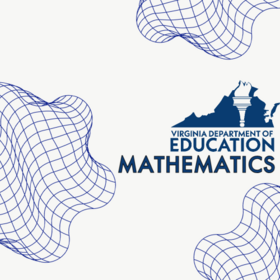
Differentiating among area, perimeter, and volume; solving practical problems - Mathematics Instructional Plan
- Subject:
- Mathematics
- Material Type:
- Lesson Plan
- Provider:
- VDOE
- Author:
- VDOE
- Date Added:
- 10/07/2024

Resources to support the Mathematics Standards of Learning for Upper Elementary

Differentiating among area, perimeter, and volume; solving practical problems - Mathematics Instructional Plan

Apply concept of perimeter, area, or volume - Algebra Readiness Remediation Plan

Using liquid measurement to identify equivalent units of measure in milliliters and liters - Algebra Readiness Remediation Plan

Reinforce measurement skills - Algebra Readiness Remediation Plan

Estimating, measuring, and identifying equivalent measures within the metric system - Mathematics Instructional Plan

End-of-year multiple choice math questions which review all of the objectives in fifth-grade math.

Fractions, Decimals, and Percents with Number Lines Algebra Readiness Remediation Plan

Students will determine what type of data is needed to answer a question and will use Google Sheets to find patterns. These data skills are needed in many career and academic fields. In addition, students will use input output tables in their daily lives through the use of vending machines, banking, and taking trips to new places. This Performance Task allows them to practice these skills through real-world scenerios.

Students will analyze a provided math problem with an incorrect answer (bug). Students will demonstrate their understanding of the process by identifying the error, solving the problem correctly and providing an explanation. Math problem solving directly correlates with the step by step process that computer science debugging requires. The purpose of this experience is to provide a jumping off point for a deeper understanding of the Computer Science SOLs. This could be the first time your students are exposed to the vocabulary (algorithm, bug, debugging) and can provide a good foundation of the understanding of the vocabulary in a concrete, low-technology way.

This performance task has the students working as bookkeepers for a P.P.E. Manufacturing Company to see how many P.P.E. they sold by adult and children sizes over a 2-3 month period of time and if their price of production vs cost for consumers to buy was enough that they made a profit or if they needed to make adjustments. This performance task has the students using PEMDAS to better understand how Algorithms and Programming are used in our everyday lives.

Students will create a flowchart to demonstrate order of operations. They will use the flowchart to be able to solve a mathematical problem.

You are planning a special trip to a place you have always wanted to visit. You will need to know the weather trends for a specific time of year so that you will know what to pack. Students will create a presentation to organize their packing that should include a line graph included with data collected about local weather and communicate what they should pack and why based on their findings. Students will need to get feedback from peers if their conclusions for they need to pack align with the weather observed. Students will use either a digital format or print format to predict what to pack for a trip of their choosing for two weeks. Students will choose a location, make a prediction, collect weather data, and analyze their results with a graph. Lastly, they will present to classmates to convince them to travel to their location and what to pack.

In this performance task, students will have the opportunity to demonstrate the use of flowcharts in Google Draw and then create their own flowchart to show their understanding of the Order of Operations.

This performance task combines a computer science standard with both history and math standards. Students will "discover" an older version of a moden technology currently used. Students will collect data to determine which techonology has been most impactful on society. Students will graph and analyze that data.

Identifying and describing the absolute value of an integer Mathematics Instructional Plans (MIPs) help teachers align instruction with the 2016 Mathematics Standards of Learning (SOL) by providing examples of how the knowledge, skills and processes found in the SOL and curriculum framework can be presented to students in the classroom.

This video is part of the Learn and Grow with WHRO TV series. Watch Nicole Neice teach about addition.

Adding and subtracting fractions with like denominators - Mathematics Instructional Plans (MIPs) help teachers align instruction with the 2016 Mathematics Standards of Learning (SOL) by providing examples of how the knowledge, skills and processes found in the SOL and curriculum framework can be presented to students in the classroom.

Adding and subtracting fractions using context as a tool to support student understanding Mathematics Instructional Plans (MIPs) help teachers align instruction with the 2016 Mathematics Standards of Learning (SOL) by providing examples of how the knowledge, skills and processes found in the SOL and curriculum framework can be presented to students in the classroom.

Adding and subtracting whole numbers. Mathematics Instructional Plans (MIPs) help teachers align instruction with the 2016 Mathematics Standards of Learning (SOL) by providing examples of how the knowledge, skills and processes found in the SOL and curriculum framework can be presented to students in the classroom.

Estimating and finding sums and differences of whole numbers Mathematics Instructional Plans (MIPs) help teachers align instruction with the 2016 Mathematics Standards of Learning (SOL) by providing examples of how the knowledge, skills and processes found in the SOL and curriculum framework can be presented to students in the classroom.